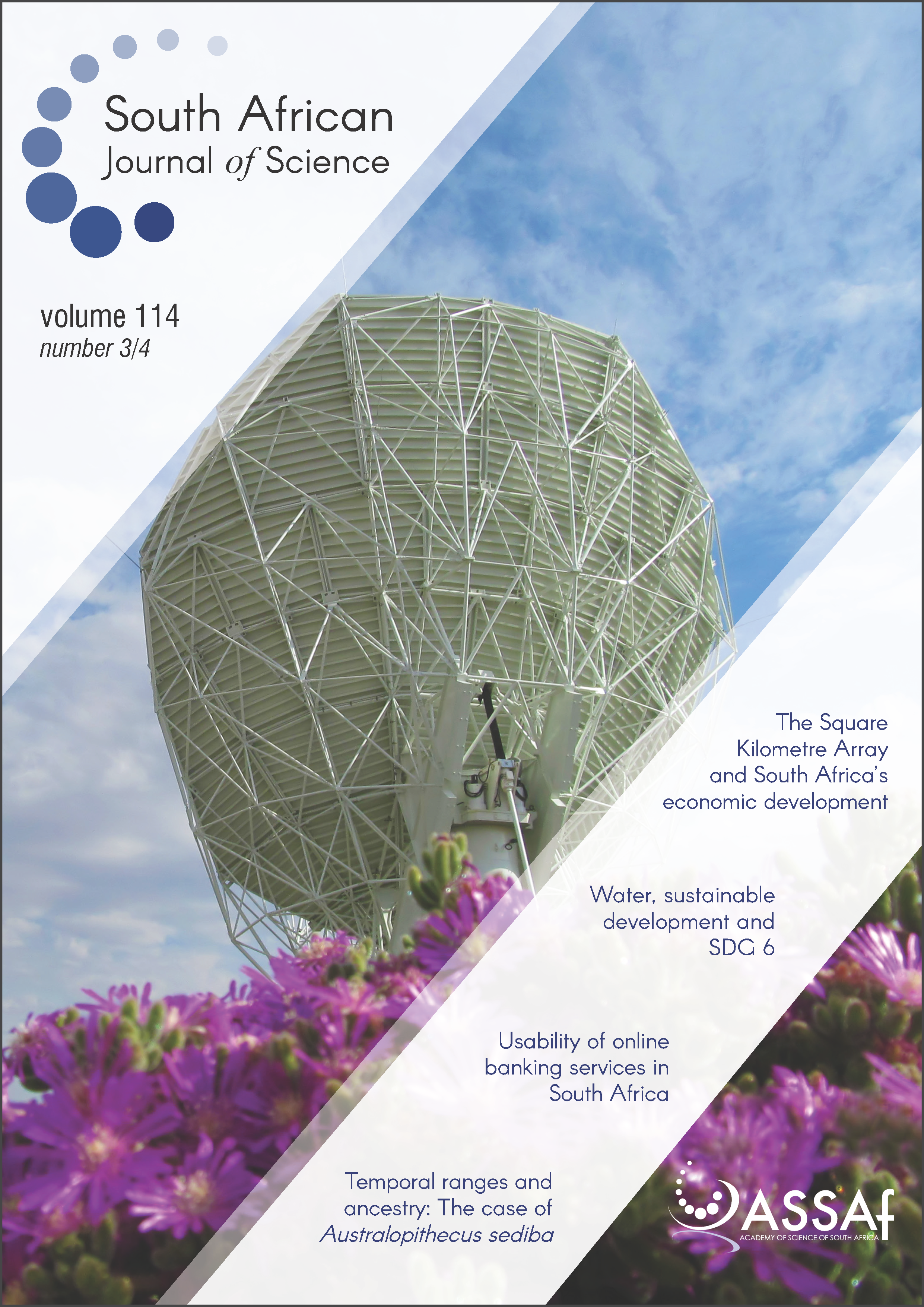Screening of the NIH Clinical Collection for inhibitors of HIV-1 integrase activity
DOI:
https://doi.org/10.17159/sajs.2018/20170324Keywords:
drug repurposing, strand transfer, pan-assay interference compounds, PAINSAbstract
Drug repurposing offers a validated approach to reduce drug attrition within the drug discovery and development pipeline through the application of known drugs and drug candidates to treat new indications. Full exploitation of this strategy necessitates the screening of a vast number of molecules against an extensive number of diseases of high burden or unmet need and the subsequent dissemination of the findings. In order to contribute to endeavours within this field, we screened the 727 compounds comprising the US National Institutes of Health (NIH) Clinical Collection through an HIV-1 (human immunodeficiency virus type 1) integrase stand transfer inhibition assay on an automated scintillation proximity assay platform. Only two compounds were identified within the initial screen, with cefixime trihydrate and epigallocatechin gallate found to reduce integrase strand transfer activity at IC50 values of 6.03±1.29 ?M and 9.57±1.62 ?M, respectively. However, both cefixime trihydrate and epigallocatechin gallate retained their low micromolar inhibitory activity when tested against a raltegravir-resistant integrase double mutant (FCIC50 values of 0.83 and 0.06, respectively), were ineffective in an orthogonal strand transfer ELISA (<30% inhibition at 100 ?M) and produced negligible selectivity index values (<1) in vitro. While no useful inhibitors of HIV-1 integrase strand transfer activity were found within the NIH Clinical Collection, the identification of two assay-disrupting molecules demonstrates the importance of consideration of non-specific inhibitors in drug repurposing screens.
Significance:
- This study is the first to screen the US NIH Clinical Collection for potential HIV-1 integrase inhibitors.
- The pervasive nature of promiscuous inhibitors is emphasised.
Published
Issue
Section
License

All articles are published under a Creative Commons Attribution 4.0 International Licence
Copyright is retained by the authors. Readers are welcome to reproduce, share and adapt the content without permission provided the source is attributed.
Disclaimer: The publisher and editors accept no responsibility for statements made by the authors
How to Cite
- Abstract 707
- PDF 732
- EPUB 237
- XML 267












.png)